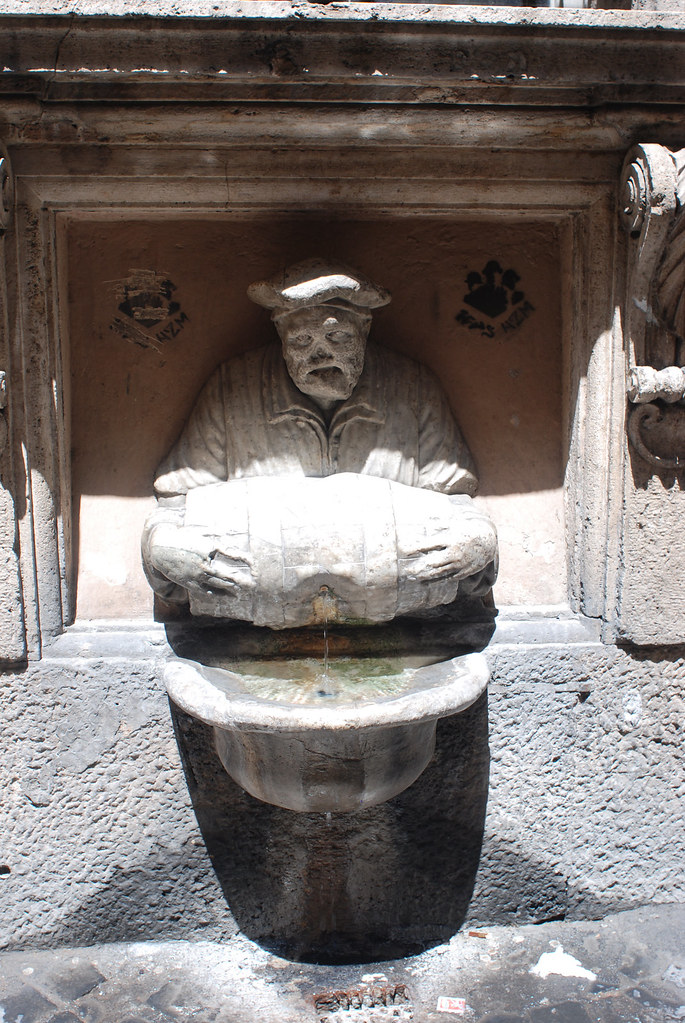
Water fountains are indeed ubiquitous in Rome. Still I felt compelled to refill and carry a water bottle. Murphy’s Law told me that there would be no water exactly when I needed it. Plus even a short walk under the blazing Italian sun caused dehydration.
Of all drinking fountains the New York Times article surveyed only one (in San Francisco) was designed to provide water to our four-legged friends. The omission especially stands out after seeing all the happy omni present canines in Europe. In Bern and Zurich, most water fountains collected the water in a pool below, and dogs, little ones helped by their owners, happily drank from the pools.
 Europeans do not tend to drink much water with their meals. Italians seem to prefer carbonated water. Everyone also seems to be used to the restaurant charging for every item served, including bread. Given all these facts, I did not expect to be automatically served tall glasses of cold tap water, but often I could not resist asking for one.
Europeans do not tend to drink much water with their meals. Italians seem to prefer carbonated water. Everyone also seems to be used to the restaurant charging for every item served, including bread. Given all these facts, I did not expect to be automatically served tall glasses of cold tap water, but often I could not resist asking for one.Both in Munich and in Berlin, when we asked, we did get tap water for free, though it came in tiny glasses (2 dcl). Germany was where the free tap water bliss ended. In Prague a waitress gently explained that tap water was “not very good” and brought out a bottle of water. In Venice the answer was much shorter—“no service.” The waiter almost snorted when I asked.
Paying for bottled water is far from shocking. I am also quite certain that people in the Czech Republic really do believe that their tap water is bad—nobody I know in Moscow drinks the tap water without filtering or boiling it. The paradox lies in the fact that while Rome has wonderful water fountains in every little piazza, and Venice prides itself on the purity and the excellent taste of its tap water, the restaurants refuse to serve it.
The change we experienced going from Venice to Lauterbrunnen in the Berner Oberland region of Switzerland could not be more drastic. The air was cool, public bathrooms were free (more on bathrooms in a separate post), and waiters did not even blink when asked for a glass of tap water. Most (though not all) restaurants still charged 1 Swiss Frank per glass, an improvement over €3.00 for 500ml bottle.



